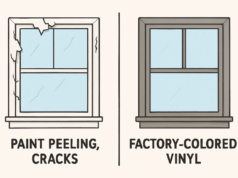Industry, EPA Debate ‘Background’ Ozone and Resulting Impact on Clean Air Act Compliance
Washington, D.C. – (RealEstateRama) — A host of legal challenges have been filed against the U.S. Environmental Protection Agency’s (EPA) rule to tighten its ozone national ambient air quality standard (NAAQS) from 75 parts per billion (ppb) down to 70 ppb. A coalition of groups representing various industries are faulting what they say is EPA’s inadequate consideration of naturally occurring “background” ozone levels (ozone formed from sources or processes other than U.S. man-made emissions ) that might hamper states’ ability to attain the agency’s tighter limit. EPA is promoting “regulatory relief mechanisms” to address the concerns of states and other interested parties.
| Search for Housing | Search for Government Real Estate |
AGC chapters and members in the West are particularly concerned that background ozone — which regulators cannot control — could make it impossible for some areas to attain the 70 ppb standard, even if they take all possible steps to mandate pollution cuts from industrial and other sources of ozone-forming emissions. Areas out of attainment with NAAQS face regulatory constraints on siting and development of new industry, threat of losing highway and transit funding, and potential restrictions on the use and operation of construction equipment.
The new ozone rule, released in October 2015, is projected by the EPA to cost as much as $1.4 billion annually to implement (not including California costs).
Background Ozone
EPA, in a recent white paper (link is external), acknowledged concerns about background ozone, but also suggested that background ozone levels are not high enough to prevent any area from meeting the new, more stringent NAAQS. EPA is holding workshops on Feb. 24-25 in Phoenix to discuss the new white paper and related technical and policy issues – click here (link is external) for the workshop presentation. The paper outlines several tools that states may use to address violations of the ozone standards resulting from high background levels, including the “exceptional events” policy (see below), EPA’s ability to designate a nonattainment area as a “rural transport area” and the Clean Air Act’s international transport provisions.
Exceptional Events
As a solution for fires or stratospheric intrusions, EPA touts its Exceptional Events Rule that allows local air regulators to exclude air monitoring data gathered during such events from demonstrations of NAAQS attainment, in order to help states avoid the nonattainment status that requires them to impose strict pollution controls on industry to cut ozone. The agency recently published a proposal to “streamline” the exceptional events rule and simplify the criteria states must meet in such circumstances. EPA’s fall 2015 regulatory agenda projects the agency will issue a final rule by August 2016.
By October 2017, EPA plans to “officially” designate areas as meeting the new 70 ppb standard (attainment areas) or exceeding it (nonattainment areas). EPA is currently projecting that 241 counties will be designated as nonattainment (based on 2012-2014 air quality data). Significantly, 10 states that currently have no 8-hour ozone nonattainment areas will have counties in violation of the 70 ppb limit, based on current data.
Are you wondering where the construction industry fits into this national “clean air” campaign? AGC recently published a fact sheet that explains EPA’s air quality management process, the 2015 revisions to the ozone NAAQS, and the possible impacts on our nation’s power, transportation and related infrastructure projects. This fact sheet and others are available on the environmental section of AGC’s website, click here (scroll down to “Find Information”). If you have further questions, please contact Leah Pilconis, senior environmental advisor to AGC, at (link sends e-mail).














